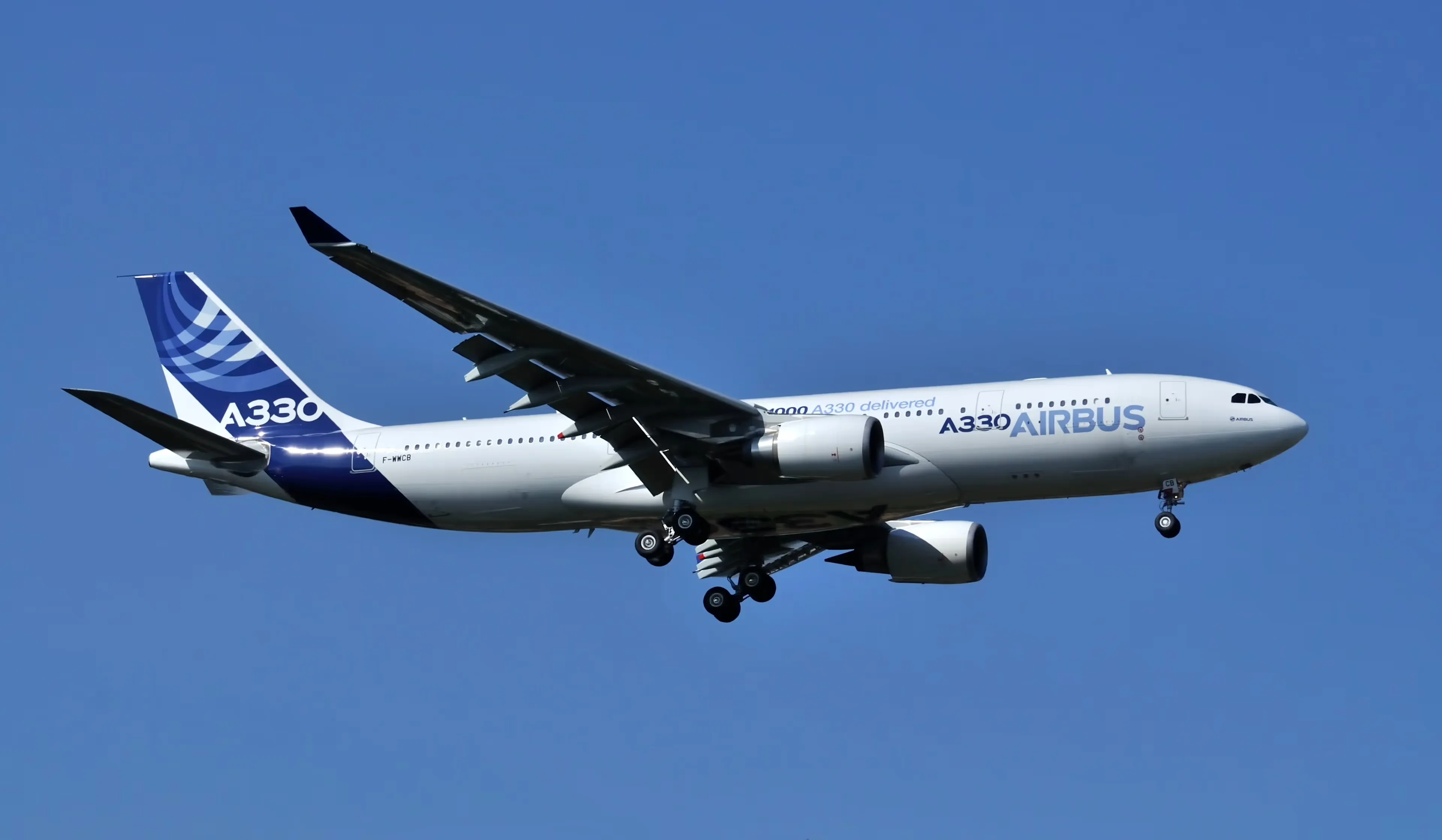DALLAS — The prototype Airbus A330-200 (F-WWCB) took to the skies for the first time in 1997 from Toulouse-Blagnac Airport (TLS).
The -200 was developed as a long-range variant of its predecessor, the -300, which first flew in November 1992. The aircraft, with a range of up to 7,250 nm (13,400 km), can carry 406 passengers in a single-class high-density configuration. The standard layout in three classes is typically between 210 and 250 passengers.

Strong Seller
By the time of the maiden flight, Airbus had an order book of 49 firm orders plus 85 options for the -200. As of December 2020, Airbus had delivered over 600 examples.
Korean Air (KE) became the type's launch customer when it received its first example (HL7539) in September 1998. The airline used the Pratt & Whitney PW4000 powered type to replace its aging Airbus A300-600Rs.
The jet comes with three engine types: the PW4000, the General Electric CF6-80E, and the Rolls-Royce Trent 700.

Freighter Variants
Airbus also developed a freighter version dubbed the A330-200F, which entered service with Etihad Airways (EY) in 2010. The all-cargo jet can carry between 65 and 70 tonnes of payload with a range of between 3,200 nm (5,900 km) and 4,000 nm (7,400 km).
In 2012 Airbus, together with ST Aerospace and Dresden-based Elbe Flugzeugwerke (EFW), launched the passenger-to-freighter (P2F) conversion program at the Singapore Air Show. Airbus delivered the first example to EgyptAir Cargo (MS) on August 3, 2018.
The featured image shows the Airbus A330-200 prototype (F-WWCB) during a test flight.




